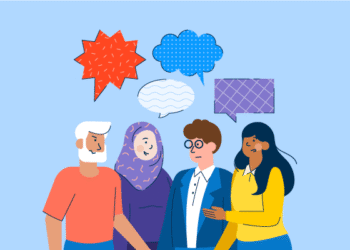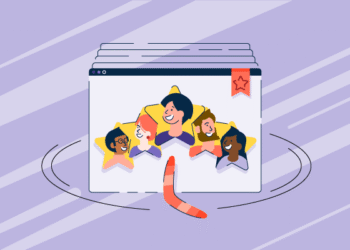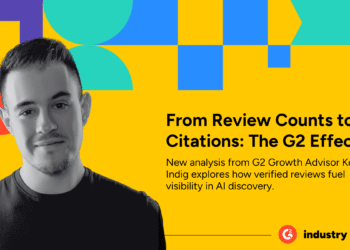Customer loyalty statistics prove something most small business owners forget: price isn’t why customers stay.
My washing machine leaked all over the floor last month.
Circuit board fried. Machine dead. Time for a new one.
The easiest move? Drive to Home Depot. Swipe the card. Done.
Except the last time I bought an appliance there, the installers showed up looking completely lost. The whole process dragged on for over a month. One month. For a washing machine.
I made a promise to myself: NEVER AGAIN.
Besides, my whole brand is built around supporting small businesses. I talk about it constantly. I write about it. I’d be a complete hypocrite if I didn’t practice it.
So I went to our local appliance store.
Here’s the thing: their washers cost about 10% more than the big box store. Not a huge difference, but enough that I noticed.
But before I even looked at prices, the sales guy said something that stopped me cold: “Go home and measure your doors first. Make sure we can actually get the machine into your house.”
Who does that? Who tells you to leave before you buy?
Then he walked me through which models to avoid. Not just which ones to buy. Which ones not to buy. From his own store.
The machine was delivered and installed exactly when they said it would be. The installers knew what they were doing. No drama. No surprises. No month-long saga.
They have my loyalty now. Not because of price. Because of everything else.
Customer loyalty statistics from a 2025 Clutch survey reveal what really keeps customers coming back: 96% of consumers say transparency is important for loyalty. 73% would switch brands if price increases. But 64% would leave if quality drops.

Price matters. But quality, transparency, and follow-through matter more.
What Customer Loyalty Statistics Tell Us About Today’s Buyers
According to a September 2025 survey of 416 U.S. consumers by Clutch, 98% of consumers make repeat purchases from brands at least once a year. That’s the good news.
The not-so-good news? 55% say their loyalty to brands has changed in the past five years. Some brands earned more loyalty. Others lost it.
The difference comes down to seven specific things small business owners control every single day.
What Actually Keeps Customers Coming Back
96% of consumers say brand transparency is important for loyalty. Not “kind of matters” or “would be nice to have.” Important.
But here’s where it gets interesting. 77% of consumers prefer buying from brands they already know. Familiarity gives you an advantage.
Except familiarity alone won’t save you.
73% would switch brands if price increases, and 64% if quality drops. Your customers like you. They want to stay with you. They’ll leave if you give them a reason.
And the biggest reason isn’t just price, it’s the combination of an increase in price combined with a decline in product or service quality. (BOOM). Which of us has not experienced this kind of behavior from brands we’ve previously trusted and been loyal to?The cost of acquiring a new customer is now up 222% since 2013, with brands losing an average of $29 per new customer. Keeping the customers you have isn’t a nice-to-have strategy. It’s survival.
Your Customers Don’t Believe Your Marketing (And That’s Your Fault)
62% of consumers believe brands today care more about image than real value.
Let that sink in for a second.
More than half your potential customers think you’re faking it. That your marketing is shinier than your actual service. That the gap between what you promise and what you deliver is wide enough to drive a truck through.
They’re not wrong to be skeptical. We’ve all bought from brands that overpromised and underdelivered.
The fix isn’t better marketing. It’s closing the gap between what you say and what you do.
What Transparency Looks Like in Practice

Stop hiding behind corporate speak. If you made a mistake, say so. If you’re raising prices, explain why. If something takes longer than expected, tell people what’s happening.
Your customer service emails should sound like you’re talking to a friend. Not a lawyer.
48% of consumers say they’d stop buying if a brand felt inauthentic. Half. That’s not a small number.
Authenticity isn’t a buzzword. It’s showing up as yourself, admitting when you don’t know something, and following through on what you promise.
Share your process. Post behind-the-scenes content. Let customers see how you work, where things sometimes go wrong, and how you fix them.
According to loyalty program research, 28% of customers consider consistent branding across all channels an important loyalty factor. Your website, your emails, your social media, your in-person interactions – they should all feel like they’re coming from the same business.
Not because you’re polished. Because you’re consistent.
The Real Reason Customers Leave (Hint: It’s Not About Price)
73% of consumers would switch brands if price increases.
So price matters, right?
Yes. And no.
Price becomes the reason people leave when everything else has already eroded. When value dropped. When communication disappeared. When they felt like you stopped caring.
“If your customers are complaining about price, they have no idea why they should choose you.”
— IVANA TAYLOR
64% would leave if quality drops. Quality matters more than price.
Think about the last time you left a business you’d been loyal to. Was it the first time prices went up? Probably not. It was after the third time they didn’t return your call, or when the service got slower, or when you felt like they took your business for granted.
How to Maintain Value Without Racing to the Bottom
If you need to raise prices, tell people what changed. New equipment. Better materials. More experienced staff. Something that makes the service genuinely better for them.
59% of consumers cite high-quality products as the top driver of brand loyalty. Quality trumps cost.
Don’t let your service quality slip because you’re busy. That’s when customers notice. That’s when they start looking around.
Build feedback loops into your business. After every project, every service, every transaction – ask what worked and what didn’t. Not with a formal survey that no one fills out. With a real conversation.
Customer retention strategies matter more than ever. Data shows that it’s 5 to 25 times more expensive to acquire a new customer than to keep an existing one.
When Things Go Wrong (And They Will)
63% will forgive brands if handled well; 61% would share a negative experience publicly.
That’s a 2% margin between someone telling their friends you’re great and telling the internet you’re terrible.
The difference? How fast you respond and how honest you are when you do.
Your Crisis Response Plan (That You Need Right Now)
Write down what you’ll do when something goes wrong. Not if. When.
Who responds first? How fast? What information do you need before you respond? What does taking responsibility look like for your business?
When I deleted that customer’s file, I had a plan. Not for “deleting files” specifically. For “when we mess up in a way that affects a customer’s work.”
Call immediately. Explain what happened without excuses. Share what you’re doing to fix it. Follow up with what you’re changing so it doesn’t happen again.
36% of consumers switch brands after a poor mobile experience. The bar for “acceptable” keeps rising. Your customers expect things to work smoothly.
When they don’t, your response matters more than the mistake.
The Loyalty Programs That Actually Work
Loyalty program members generate 12 to 18% more revenue growth per year than non-members.
That’s significant. But here’s what most small businesses get wrong about loyalty programs: they think it’s about points and rewards.
It’s not.
It’s about making customers feel like they matter. Like you remember them. Like coming back to you is easier than going somewhere new.
Customer loyalty statistics from research across multiple industries show that 77% of consumers have remained loyal to at least one brand for 10 years or more. The businesses earning that decade-long loyalty aren’t running complex rewards programs. They’re doing simple things consistently.
Building Loyalty Without Complex Software
You don’t need a sophisticated points system. You need to remember names. Remember preferences. Remember what someone ordered last time.
I go to the same coffee shop because they remember I order oat milk. That’s it. No points card. No app. Just someone who remembers.
For your business, this might mean:
Keeping notes on customer preferences in your CRM. Not creepy notes. Useful ones.
Sending a quick message when you see something relevant to their business or interest.
Giving repeat customers first dibs on new services or products.
Following up after a project to see how things worked out.
Research shows 57% of consumers spend more on brands or providers they’re loyal to. Your best customers already want to spend more with you. Make it easy for them.
Approximately 64% of loyalty program members adjust their spending to maximize rewards. This isn’t manipulation. It’s understanding what motivates people and building your business around it.
Making Your Marketing Match Your Reality
77% prefer buying from brands they already know.
Familiarity matters. But familiarity built on false promises creates resentment.
Your marketing should make promises you’re excited to keep. Not promises that make you nervous about whether you deliver.
The Authenticity Test for Your Marketing
Read your website copy out loud. Would you say those words to a customer’s face? If not, rewrite it.
Look at your before-and-after photos. Did you actually do that work? Or did you find the perfect example online? Show your real work.
Check your response times. Do you promise same-day responses and take three days? Either get faster or change your promise.
86% of brand-loyal consumers recommend their favorite brands to friends or family. Word-of-mouth happens when reality exceeds expectations. Not when marketing exceeds reality.
The best marketing strategies for small businesses focus on delivering value first, promotion second.
What Changed in Five Years (And What It Means for You)
55% of consumers say their loyalty has changed in the past five years.
The businesses that gained loyalty did specific things. The ones that lost it did specific things too.
The winners invested in customer experience. They got faster. They got more transparent. They made it easier to do business with them.
The losers relied on inertia. They assumed customers would stick around because they always had. They let quality slip. They stopped communicating.
According to brand loyalty research, most retail business (65%) comes from loyal customers, who spend 67% more on an average purchase than new customers.
Your repeat customers are worth more than new ones. They buy more. They refer others. They forgive mistakes.
The Seven Actions That Build Loyalty
Based on the Clutch survey and supporting research, here’s what moves the needle:
Be transparent about everything. 96% say transparency is important for loyalty. Share your process. Explain your pricing. Admit when things go wrong.
Maintain quality obsessively. 64% would leave if quality drops. Never let “good enough” become your standard.
Respond to problems immediately. 63% will forgive if handled well. Speed matters as much as the solution.
Keep your promises. 48% stop buying if a brand feels inauthentic. Say what you mean. Do what you say.
Stay consistent everywhere. 28% value consistent branding across all channels. Your email voice should match your in-person voice.
Make repeat business easy. Loyalty program members generate 12-18% more revenue. Remove friction from coming back.
Remember your customers. 86% of loyal customers recommend brands to friends. Personal touches create word-of-mouth.
What to Do First (Like, Actually First)
Pick one customer you already have. Someone who’s been with you a while. Someone you want to keep.
Send them a message asking what you’re doing well and what you could improve. Not a survey. A real question.
Listen to what they say. Then fix one thing they mentioned.
That’s it. That’s the whole strategy.
A 5% increase in customer retention correlates with a 25% increase in profit. Small improvements in how you treat existing customers have outsized returns.
The businesses winning on loyalty aren’t doing ten things differently. They’re doing two or three things consistently, with intention, every single day.
Start with transparency. Add quality. Build from there.
Your customers will stick with you through mistakes, price increases, and competition. But only if you give them reasons to trust that you’re worth it.
Frequently Asked Questions About Customer Loyalty
How much does it cost to keep a customer vs. getting a new one?
It costs 5 to 25 times more to acquire a new customer than to keep an existing one. Worse, brands now lose an average of $29 per new customer due to rising acquisition costs. A 5% increase in customer retention can boost profitability by 25% to 95%. The math is simple: keeping customers is cheaper and more profitable than constantly chasing new ones.
What percentage of customers will leave after one bad experience?
The numbers vary based on severity. 64% will leave if quality drops consistently. 73% will switch if prices increase without added value. But here’s the good news: 63% will forgive brands if mistakes are handled well. The key is responding immediately, being transparent about what happened, and showing what you’re changing to prevent it from happening again.
Do loyalty programs really increase sales?
Yes. Loyalty program members generate 12 to 18% more revenue growth per year than non-members. 57% of consumers spend more on brands they’re loyal to. But you don’t need a complex points system. Simple loyalty strategies like remembering customer preferences, offering early access to new products, and providing consistent quality work just as well for small businesses.
What’s the #1 factor that builds customer loyalty?
Transparency. 96% of consumers say brand transparency is important for loyalty. This beats out price, convenience, and even loyalty programs. Customers want to know your process, understand your pricing, and trust that you’ll be honest when things go wrong. Quality comes second (59% cite it as a top driver), followed by customer service and shared values.
How long does it take to build customer loyalty?
Most consumers (88%) require at least three purchases before they consider themselves loyal to a brand. But 37% of consumers believe it takes five or more interactions. This means your customer experience needs to be consistent from day one. Don’t wait until someone’s been with you for a year to start treating them well. Every interaction either builds or erodes trust.














